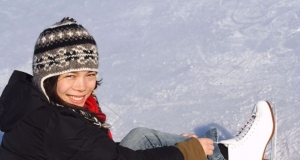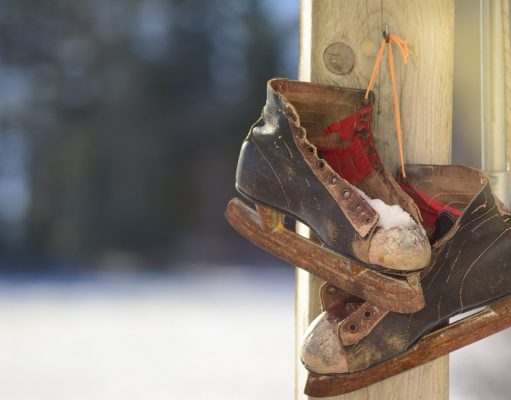Ice skating has many purposes: for sport, leisure, transportation and exercise. You can Ice skate in places like Ice Rinks, parks, indoors or outdoors, frozen lakes, ponds and rivers (if they are frozen enough). You will require some ice skates, which are special shoes with a metal blade.
Believed to have originated in Finland over 3000 years ago, ice skating is a fun and exciting hobby which the whole family can enjoy. The blades from the ice skates actually cut into the ice instead of gliding on top of it. Figure skating, which is a combination of dance and classical movements, started in America. When Ice skating for the first time, it can be a bit difficult learning how to stay upright and move forward, but the movement is similar to roller blading. If you are serious about ice skating on a regular basis, it is good to get a few beginners lessons so that you start out with the right technique as a foundation to your new hobby.
Keep scrolling down the page to learn more about this hobby. HobbyFinda has over 300 exciting hobbies to explore and with the use of our HobbyFinda Calculator, we make it easy for you to find a hobby the fun way!
Ice skating clothing: fun facts and rule books
By Albapp
Fashion on skating rinks have significantly changed throughout the years, especially in terms of the fabric used for the construction of the athletes’ dresses and costumes, but something that has remained more or less the same is the judges’ preference for sober clothing, not excessively theatrical and that most of all showcase the abilities of the skater.
The main criteria for choosing one or another leotard is usually and fundamentally the fabric: since there is nothing more important than the actual performance of a dress under competing conditions, the vast majority of ice skaters are willing to sacrifice some of the esthetic qualities in order to acquire sportswear with the best standards, worthy of high level championships. This means adequate fabric for every discipline, but also careful and professional construction of every item from the designer’s side.
Another essential element of figure skating dresses is safety: every club and sport association can choose to be more or less strict on this issue, but in general it is not advised to participate in competitions wearing excessively bedazzled, baroque leotards and dresses with flying elements, jewelry or long accessories like scarves.
The sport regulation provides further limitations with regard to what athletes can and cannot wear whenever they are competing. After Katarina Witt’s performance in the European Championships in 1988, some guidelines were issued to the whole ice skating community, stating that women should wear skirts that cover their hips. The German skater surprised everyone with a combination of feathers instead of a skirt, initiative that was considered inadequate for an athletic competition. The same way, men are advised not to wear sleeveless costumes and not to go bare their chests, although different judges and committees tend to apply this rules differently for both men and women.
However, this does not mean that ice skating dresses do not aim to surprise and have a strong visual impact on both the public and judges. The search for a costume that is able to amaze the judges while remaining inside the rule book and the best practices released by the sport’s federation is one that takes time and usually requires several weeks. While bodies and leotards with long sleeves are preferred because they make it easier for the judges to see the arm movements, pleated skirts like those usually worn by cheerleaders are the most popular choice. Contrary to stretch and fitted skirts, pleated ones contribute in improving the already spectacular visual effect of jumps, twirls and turns.
A different category is that of test dresses for competition training sessions. Since in the majority of high level championships judges are allowed to assist to training sessions before the competition, athletes must carefully choose training clothing. This should be, above all, sober, elegant and simple, and not necessarily linked to the dress for the actual official competition.
Every ice skating discipline has particular requirements in terms of what an item of clothing should be like, as well as specific regulations and general preferences of the athletes. Therefore, it is very important that designers offer a vast variety of options, silhouettes, colors and fabrics in order to allow for modular composition of the perfect figure skating dress for competition.
Article Source: ArticleBase



















